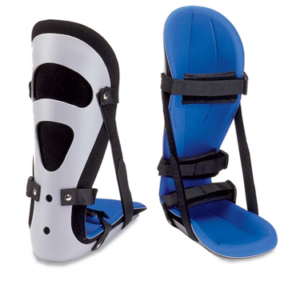Contact Us
Taking The Next Steps- Your Therapist And Orthotist/Prosthetist Working Towards One Common Goal
The world of Orthotics/Prosthetics and the world of Physical Therapy. Two worlds that at times have collided, but when collaborative they can have a profound impact on the outcome of a patient’s care. A team approach between the two fields, an acknowledgement of each field’s unique skillset and an open line of communication between the two parties leads to better patient outcomes. Therapists and orthotists/prosthetists make up a foundation that can support a patient’s rehabilitation pathway to reach their goals and maintain their activities of daily living.
The therapists usually lay the ground work by recommending that a patient be evaluated for an orthotic or prosthetic device. Therapists often will make this recommendation when the program they’ve created for the patient is working, but a deficit or hurdle is still present. They may suggest an orthotic or prosthetic device as an additional tool in their rehabilitative toolbox.
The role of the orthotist/prosthetist is to evaluate the patient and understand their diagnosis. The orthotist/prosthetist also needs to have knowledge of the patient’s goals, functional abilities, daily life routines and any obstacles that could hinder use of a device. Asking these important questions and understanding how they can affect outcomes will help to develop the proper design, fabrication, fitting and follow-up of the device. The orthotist/prosthetist will then deliver the device to the patient ensuring proper fit and function.
The orthotist/prosthetist is responsible for ensuring that the patient and/or caretakers understand why the device should be used and how to use it appropriately. They will give patients guidelines on proper skin care and maintenance procedures, explain the risks, benefits and potential malfunctions, and what to do if there is a problem. They give the patient the basics and ensure the device is properly functioning for the goals that have been set. The orthotist/prosthetist will often recommend the patient continue with physical therapy even once they have the device.
Physical therapy is often integral when learning how to properly use a new device. Through therapy, patients now learn better methods for donning/doffing the device, how to take proper steps and how to initiate biomechanically efficient movements. Therapists teach patients how to properly fire certain muscles in order to avoid compensatory motions that could lead to further injury. The orthotist/prosthetist is still involved with frequent follow-ups with the patient to ensure the device is fitting and functioning properly for the patient as they progress through their rehabilitation.
Therapists may suggest patients return to see their orthotist/prosthetist if the device needs any type of modification. This could be adjusting the device to avoid skin irritation or making modifications to improve the overall function of the device. The job of the orthotists/prosthetist is to evaluate if the device the patient is still appropriate as a patient progresses. If it isn’t, then it is their job to determine what changes need to be made or if it is necessary to provide a different device.
Orthotists/Prosthetists may also suggest more physical therapy if it has been a long time since a patient last participated in any type of therapy program. Factors like aging, deconditioning or possible progression of a condition can cause patients to start noticing difficulty with a device that was not previously present. At times there can be difficulty adjusting to a new device or the device is a different design from what they’ve previously been used to.
Collaboration and open communication between a patient’s therapist and their orthotist/prosthetist is a practice that needs to be maintained for better long term outcomes and patient satisfaction. Understanding this important relationship and team approach will continue to yield more chances for successful outcomes and achievement of long-term goals.





